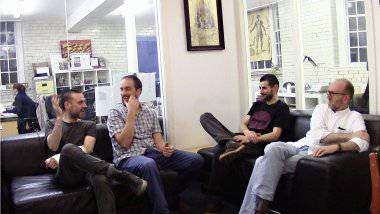Frank Quietly’s “Nothing to Declare” an Interview with the Team Behind the Festival Frightener
Nothing to Declare is the upcoming animated short film that sees an accumulation of Scottish talent working to a script by acclaimed graphic novel artist Frank Quietly who has taken a move away from penciling and inking the likes of Superman, The X-Men and The Authority and has penned a horror story set at Christmas. The film stars intrepid traveller Chris who returns home to Glasgow from his trip to South America at Christmas only to find his family in the terrifying grip of a grotesque and unsettling transformation.
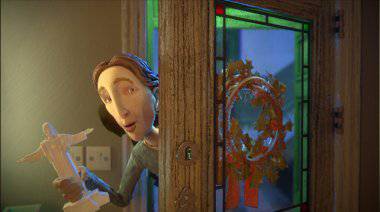
As the landscape for animated short film making keeps changing, it’s interesting to note that this film was funded by both the Scottish Film Talent Network and a crowd funding campaign on Indiegogo (which you can still donate to) perhaps demonstrating the state of modern film funding, especially considering that this is not an amateur production. Alongside the big name writer the film is directed by Will Adams of Glasgow based Once Were Farmers, tech directed by Tom Bryant and Interference Pattern the co-colaborators of 2011 Oscar winner The Lost Thing, with music by John Cummings (of Mogwai fame) and layout by Disney alumni Fraser Maclean, an authority of layout as the author of Setting the Scene. The team have been corralled together by producer Mal Young.
We spoke to some of the crew from the short to get a tantalising glimpse behind the scenes of the short which is due out next year.
Frank Quietly (writer) after a prolific career working with some well loved characters in comics and graphic novels, both fictional characters and those in the industry, you’ve turned your hand to writing for animation, why writing and why animation as opposed to live action?
At the beginning of my career, in self-published comics, I started off as a writer/artist. I then spent the next couple of decades concentrating on visual storytelling working with some very talented writers, and about 4 years ago I started writing some short stories that I intend to draw as comic strips when I had the time. Mal Young asked me if I’d be interested in making one of my stories into an animated short, with Will Adams from Once Were Farmers and Tom Bryant from Interference Pattern.
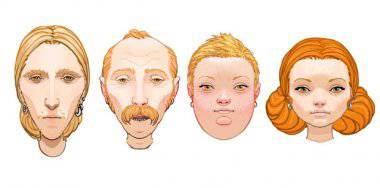
Cast design by Frank Quietly
Once we had the screenplay finalised to everyone’s satisfaction things eased off a bit for me and I could get back to the deadlines of my comic work. I did some character designs, and got a little involved in the storyboarding, but for the most part I’ve had the pleasure of just watching an amazing team of skilled individuals doing their thing.I’ve always loved animation, and I’ve been friends with these guys for years, and we’ve talking about collaborating for years, and I suppose with Mal, and SFTN and all our collective enthusiasm the time was just right for it.
As horror is a well trodden area it’s difficult to find new things to scare people or centre a story around, the idea that drives this film is horrifying, is it an idea that has horrified you for a while?
The idea for it came from watching a clip of one of David Attenborough’s programs and thinking “image that happened to people!” That central idea is horrific, especially the more you think about it, but you can use that idea in different ways. The way we chose to use it, the way we chose to tell the story, was by bringing it into a loving home where the horror of it would be heightened, and we introduced the question of culpability, and ended with the burden of realising what’s going to happen next.
Will Adams (director) like telling a good joke, telling a horror story is difficult unless done absolutely right, how did you approach and translate the script?
From Frank’s initial idea we’d developed the script together on workshops with the Scottish Film Talent Network so I really loved where it’d got to by the time we were ready to start production. Being a visual artist, Frank’s writing is packed with visual details which is great for animation. However, once we started to cut the animatic I felt like there wasn’t enough action, it felt like the lead character, Chris, wasn’t fully interacting with his environment, so most of the changes I introduced during the storyboarding process where small events to trigger Chris’ reactions. Otherwise we’d have been relying very heavily on the facial animation to convey his thought processes. Part of my job was to make his thoughts more physical, take them out of his head and into his world, in order to make them easy to read in a short film.
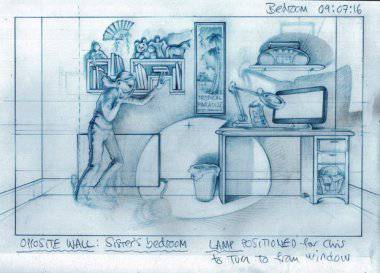
Short films of this ilk are rare, how did you find the resources to pull a team together to make this film alongside Once Were Farmers other, commercial commitments?
It’s been very difficult which is why we’re over schedule and needed the indigogo campaign to help us complete the film. The development process with Scottish Fim Talent Network was great and we were really excited to win the pitch but the amount of money on offer is very small – less than half what we’d usually have for a 30 sec ad, let alone a six minute film. So that’s meant doing a lot of the work ourselves without pay and keeping the cash for the extra help we had to buy in. It’s also meant doing several jobs. We were fortunate to discover Nick Hales, as well as being an excellent animator, was able to rig the main character and props too, which really streamlined the animation process. As well as directing I was on layout, editing and some FX animation – tho I love being hands on, so I’m not complaining. Otherwise it’s just a lot of juggling and evening and weekend work, and I have to thank my business partner Rory for holding the fort, and even funding my time, while I got to have fun making the film; and thanks to my partner, Angela for her patience and support holding the home front too.
Tom Bryant (tech director) As Interference Pattern and Frank Quietly are well known for the work they produce in their fields, How do you approach a project like this?
The three main contributors, (ourselves) Interference Pattern, Frank Quietly and Will Adams of Once Were Farmers have all had clearly defined roles and responsibilities on the film which has helped the production process run as smoothly as possible. Franks duties were mostly been in the pre-production phase, writing the story and script and then designing the characters. Once character designs and environment concepts were completed and signed-off, the team at Interference Pattern started the 3d asset creation phase. Once completed IP proceeded to lighting setup and shot assembly, pulling in the completed character animation from OWF into the lighting scenes and doing per shot lighting setup. We are currently in the midst of our final lighting and compositing phase, aiming for our January deadline.All under the directorial eye of Will Adams, who has directed and edited the film, along with supervising the animation at Once Were Farmers.
L-R: Frank Quietly, Will Adams, Tom Bryant and Fraser Maclean
Given the clear compartmentalization of the workloads and tasks in the film, production has in many ways been a similar process to a traditional client-studio job, albeit with a far greater range of creative freedom and input from ourselves to the project. We have been able to push the out work on the project both technically and creatively. Collaborating with another studio isn’t something that we have undertaken before and it has all proceeded very smoothly, where each has had the chance to focus on their core specialities.”
Fraser MacLean (layout) The home in the short seems weighted in reality, there’s a distinct Glaswegian feel to it with the cold stairwells and cosy tenement flat contrast that delivers a type of reality that sometimes gets lost in caricature, talk us through your decisions when you designed the setting.
All the time that I lived, studied and worked in Glasgow back in the 1980s, I stayed in exactly this kind of 19th Century tenement flat, so the home environment described in Frank’s script was one that I knew by heart, from personal experience. The difference was – when I was a student, a flat of this size was always divided into bedsits with one person occupying each room and often the kitchen would be the only shared, communal space. On “Nothing To Declare”, because all the rooms were allowed to have their own true identity, every space was able to have a distinct narrative purpose and an individual decor, appropriate to the key story beats.
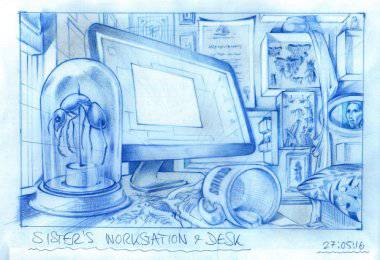
It was also great, at long last, to be let loose on a horror movie, because the placement of the camera, the lighting and the choice of lens can really help you to position or “cast” even the most familiar props or everyday furnishings so that they prime the viewer for whatever shock is waiting on the other side of the door. In other words, the visual decision-making was all rooted in how to provide the raw materials from which Tom and Will, through their Lighting and Direction choices, could withhold – and then deliver those essential ugly surprises.
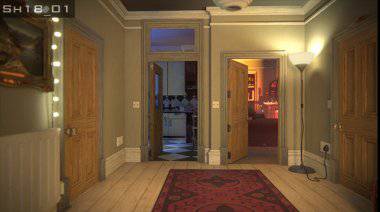
Mal Young (producer) As a relative newcomer to the role of producer, how have you found the process of putting together a short film in this way?
Overall, it has been a fantastic experience, full of excitement and challenges to tackle along the way. The process has been pretty smooth and that comes down to the skills and professionalism of the people on the team. I’ve known Frank Quitely for a few years now, and have always loved his work. With so much experience in working with stories and visualising them, I wondered if he had written any himself and whether he would be interested in getting involved with animation. I knew about the Scottish Film Talent Network’s New Talent Shorts scheme and this seemed the right project to try submitting to the scheme. At first, I’m wasn’t sure what Frank thought, but he came round to the idea of at least submitting an application and having the opportunity of working with Will Adams, something they have both talked about for many years.I suggested that we bring in Tom Bryant from Interference Pattern. I had worked with Tom for a couple of years and knew that not only does he do wonderful work but is a really nice guy with a very similar attitude and approach to life/work as Will and Frank. It seemed a really nice match and a logical choice; Tom also said yes and wanted to get involved. One of my hopes for the project is that the film shows what these two studios can accomplish together and to provide a workflow for future bigger projects that the studios can collaboratively pitch for.
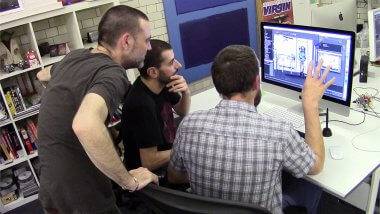
Fraser was working with Will on Base Camp (animation course) and Animation Centrifuge, and started helping Will with layout and storyboards. He became progressively more involved and it’s been amazing to have him working on the film so much; there seems to be nothing that he doesn’t know. We also had Ryan Adams (amongst other things, he was the character designer for the Octonauts) helping out with storyboards panels.I contacted John Cummings about composing the for the music to the film, and it was fantastic that he wanted to be part of the project. John was previously with the band Mogwai and with the band created the music to the French TV series The Returned. Will had referenced the series in his description of what he wanted for the music and was really happy to have John work on the music.
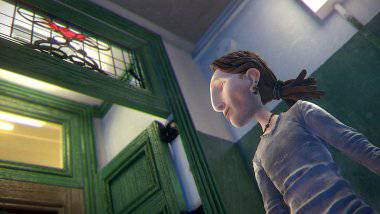
I never seem to be able to give a short answer… sorry :D… but to answer the question directly, there has been so much support from SFTN and our exec producer Carolynne Kidd Sinclair. Will has been amazing in guiding me through the process, listening to me and giving sage advice. When we hit a funding issue it was great to have all of the creative team on board and their full backing on how to proceed. There was so much interest in the project when I talked about it in Annecy during the summer and it’s been so great to see the response from so many people to our Indiegogo campaign. Rebecca Thompson from Hot Tap Media has been great in helping set up and run the campaign as well as evolving my Luddite approach to social media.It’s true what they say about finding great people to work with, I have been very lucky with the support of SFTN /Creative Scotland and having the chance to work with such talented artists. Without resources online like Skwigly this would have been so much harder. It’s hard to tell how much is luck, the strength of the project or just asking very nicely but everyone around the project has been really supportive.
Nothing to Declare will be frightening filmgoers in 2017. You can follow the Nothing to Declare team on Facebook here or take a look at their Indiegogo page here. For more information on the team take a look at the Once Were Farmers and Interference Pattern websites.



